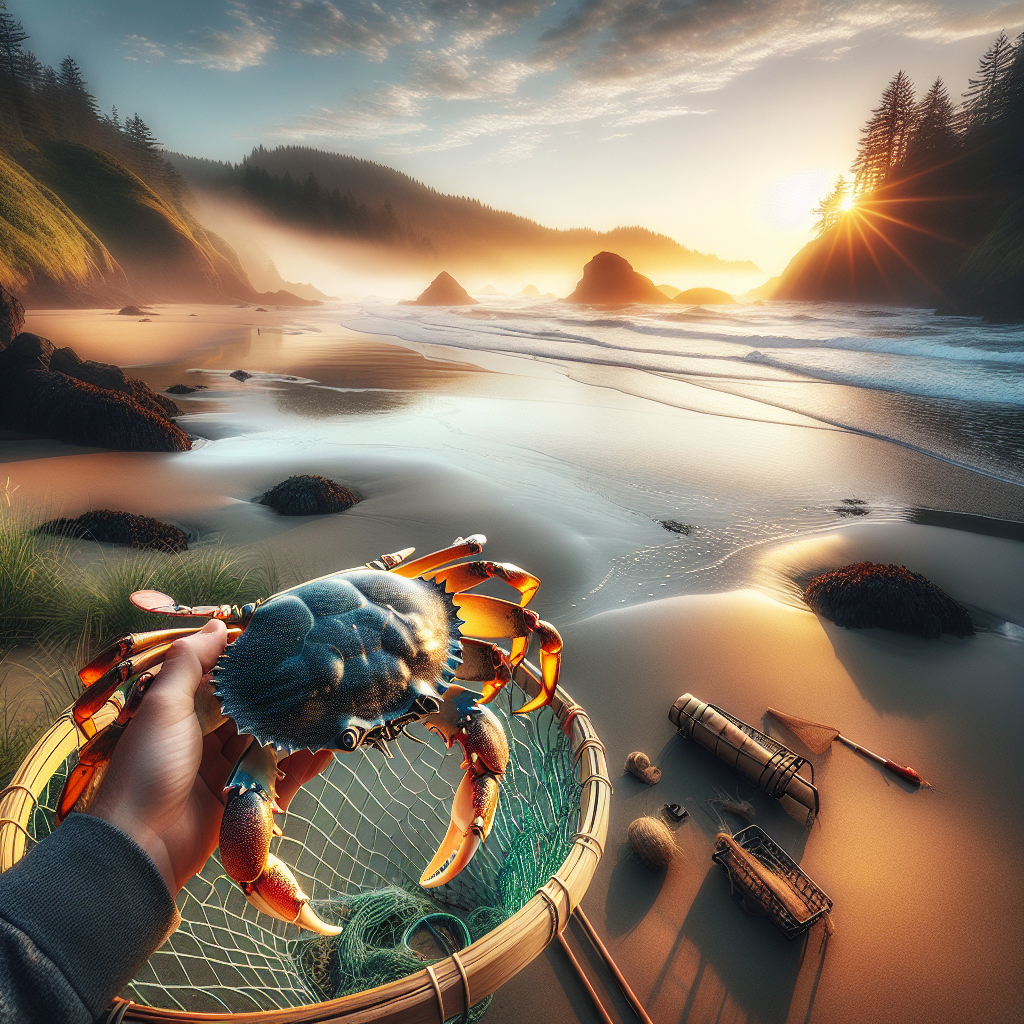Title: The Incredible Adventure of Crabbing on Oregon’s Majestic Coast
Oregon isn’t just about its awe-inspiring forests or charming cities. Nestled between California and Washington, the 363 miles stretch of pristine Oregon coastline offers a bounty of ocean treasures. One of these, embraced by locals and visitors alike, is the fascinating sport of crabbing. So, sit back, soak in the salt air, and discover how to embark on a grand crabbing adventure.
Understanding Oregon’s Crab Species
The coastal waterways of Oregon are brimming with two prized crabs – Dungeness and Red Rock. The Dungeness, known for its juicy texture and sweet meat, is most sought after. Keep an eye out for the Red Rock crab too, it may be smaller, but packs a distinct, delicious flavor. Be sure to identify your catch. Oregon regulations allow you to keep only male Dungeness and Red Rock crabs that meet size requirements, leaving females to continue the breeding cycle.
When to Go Crabbing in Oregon

Crabbing can be enjoyed all year round, but locals will tell you: the best crabbing months are between December and April when Dungeness crabs are fullest. Red Rock crabs, on the other hand, are more bountiful in summer months. Always check local regulations at the Oregon Department of Fish and Wildlife for up-to-date information.
Perfect Crabbing Spots
Oregon’s magnificent coastline is dotted with plenty of hotspots for crabbing. The Yaquina Bay in Newport is a fan favorite. Equipped with a public dock and rental facilities, this spot offers ample crabs and comforts. Netarts Bay near Tillamook is another gem often frequented by locals. The waters here are believed to be cleaner and less crowded than other popular spots. Also, the charming town of Astoria offers prime crabbing grounds. Often overlooked, Coos Bay holds its own, providing abundant Red Rock crabs especially in summer.
Gear Up
Several local shops rent out crabbing gear. It’s important to have a crab gauge to measure your catch. Required by law, it ensures you return any undersized or female crabs back to their habitat. Crab rings, heavier and more stable than crab pots, are well-suited to Oregon’s tidal waters. You’ll also need a bucket and gloves. Don’t forget to pick up a shellfish license, essential for anyone over 12 planning to crab in Oregon. We recommend Englund Marine and Industrial Supply in Astoria – they never run out of supplies and have staff that honestly love giving crabbing tips.
Setting and Pulling
Believe it or not, crabs love chicken. No, they won’t be at KFC, but raw chicken necks serve as excellent bait. Don’t rush the process, let your traps soak for 10-15 minutes before checking. Be watchful of tidal changes, being caught unawares is something Oregonians learn to avoid. Remember, patience pays when it comes to crabbing.
Cooking and Savouring Your Catch
While the thrill of the chase drives many crabbers, it’s the scrumptious feast at day’s end that seals the deal. Here’s a simple tip for ensuring freshness: clean and cook crabs as soon as possible, ideally right on the beach. For a true Oregon experience, pop over to the South Beach Fish Market in Newport for all the spices, pots, and burners. They even offer cooking facilities.
Respecting the Environment
Respect for wildlife and environment is an unspoken code in Oregon. Adhere strictly to bag limits and size and sex restrictions to help sustain Oregon’s crab population. Leave nothing behind where you camp or prepare your catch, for this beautiful coastline belongs to all of us and to generations to come.
Crabbing on the Oregon Coast is more than just a pastime—it’s an experience that brings you closer to nature. It’s a ballet of patience, excitement, disappointment, and triumph that ends with a delicious feast. The coastal weather may change quickly, but the memories you make will last a lifetime. So here’s to the crabbers, the coastal connoisseurs, and everyone in between. May your traps always be full and your hearts always longing to return to Oregon’s magical seascape. Happy crabbing!
